We are creating a new set for video surveillance.
On the frame above is a ready-made video surveillance system with IP cameras. But let’s start in order. The analog system includes, at a minimum:
- camera
- DVR
As a maximum:
- camera
- The DVR
- the control panel of rotary cameras
- the screen for viewing the image
Now let’s look at the difference between a digital video surveillance system.
The minimum set:
- The IP camera
- switch (PoE or conventional)
The maximum set:
- The IP camera
- switch (PoE or conventional)
- DVR
- the control panel of rotary cameras
- the screen for viewing the image
As you can see, the difference is not only that analog cameras are connected directly to the DVR, and IP cameras require the presence of a switch. By itself, an IP camera can send video to any server (local NAS or remote FTP) or save video to a USB flash drive. It should be noted that adding a PoE switch also makes it much easier, since when installing a large number of cameras in a remote location, you do not need to pull the cable from each camera, but it’s enough to stretch one line from the switch
Types of cameras
Each problem has its own solution. We will consider the main types and areas of their application. We must immediately say that we will describe street cameras, which are used for typical tasks. There are variations and subspecies, but the main types of chambers are only 3.
Cylindrical 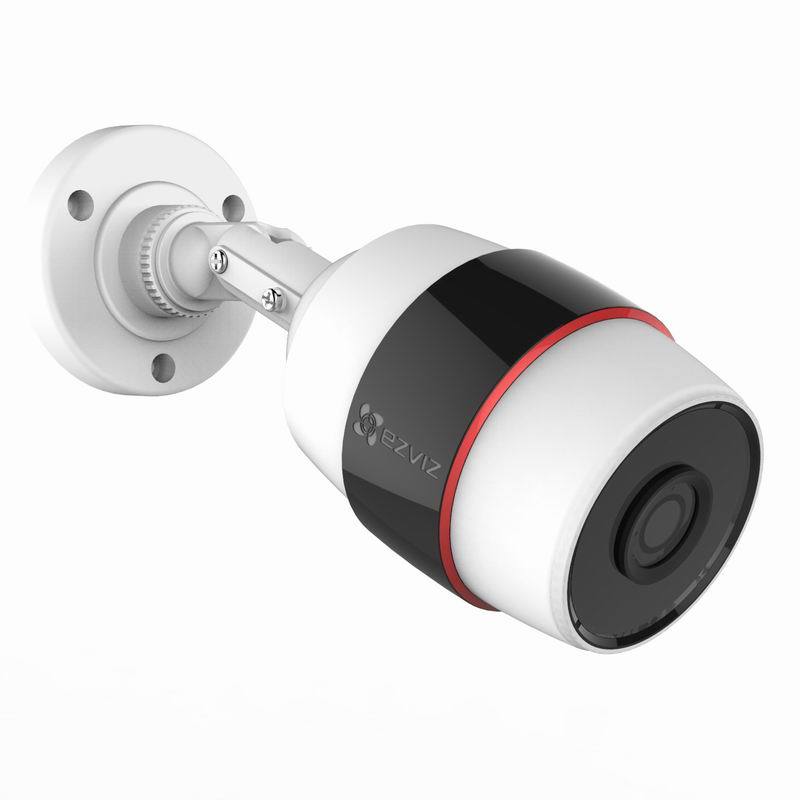
Classical cylindrical street camera. The body is usually made of strong plastic or of metal with a round or rectangular cross section. Inside, all optics and electronics are mounted. The lens can be varifocal or without the ability to zoom in and adjust the sharpness. The simplest and most common option. Easy to install and configure. The mass of modifications with different characteristics. Once set up and forgot.
Dome 
Such cameras are more common in the premises, because the most applicable installation site is the ceiling. They occupy very little space. Easy to set up. All electronics, an objective and a matrix are mounted in one block. Once set up and forgot. There are modifications with built-in microphone and remote speaker for communicating with the observed object.
Swivel or dome rotary 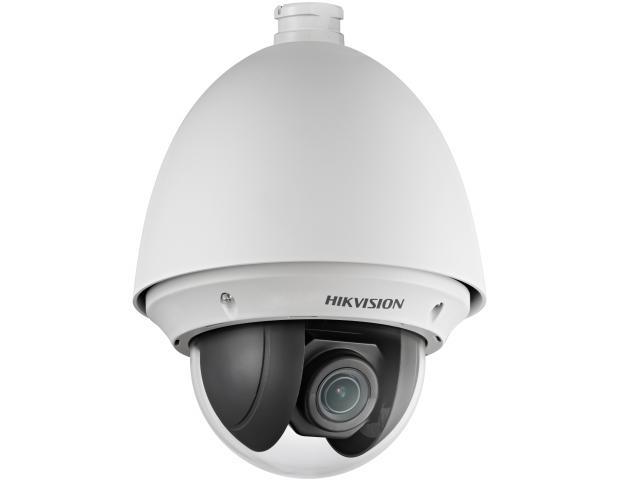
The main advantage of these cameras is the possibility of panning And the approximation of the picture. One such camera allows you to inspect a large area at once. Can work on the program (zoom in on object 1, turn on object 2, view the whole area, zoom in on object 3) or by operator’s command. They stand somewhat more expensive, but they do not have the disadvantages of the previous two cameras – for the reconfiguration of the observation object there is no need for physical presence near the camera.
Since the object of observation is a house, it was possible to apply any type of camera. In order to make the system budgetary, but at the same time meet the requirements for image quality, it was decided to use two types of cameras: cylindrical – for perimeter inspection and dome – to monitor the entrance door and parking.
Choice Cameras
The basis of the video surveillance system was a novelty on the Russian market – the Ezviz C3S camera. This camera, with its compact dimensions, has a mass of positive qualities:
- a wide range of operating temperatures: from -30 to +60
- Full moisture and dust protection (IP66)
- Support for FullHD resolution (1920 * 1080)
- Support for transfer over Wi-Fi or Ethernet
- PoE power support (only in non-Wi-Fi versions)
- H.264 codec support
- The ability to record on microSD
- Ability to work through the cloud, or with a local DVR
To estimate the dimensions of the camera (176 x 84 x 70 mm), I placed an AA size battery next to it. If you are interested in a detailed review of this camera or a comparison with the younger C3C model, write in the comments and I’ll put it in a separate material.
For comparison with an analog camera (19459006)
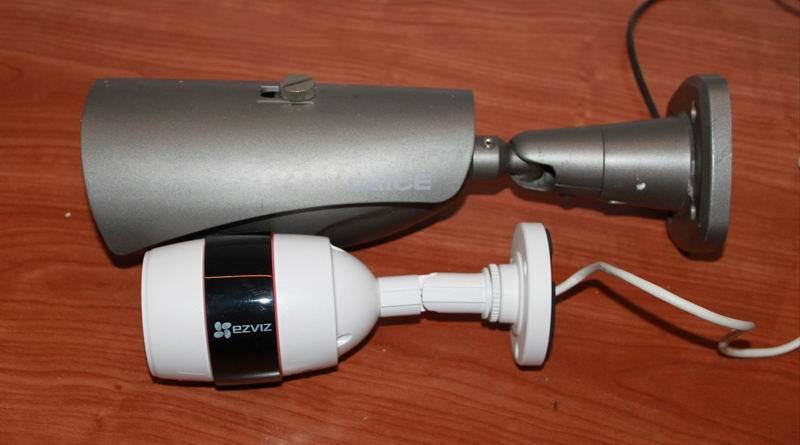
It should be noted that the camera is equipped with infrared LEDs and technology to compensate for exposure, So it can work in total darkness or with side light from the bright moon, snow, a searchlight. As practice has shown, the object is distinguishable at a distance of 20-25 meters in total darkness and is clearly visible from a distance of 10 meters. The camera supports the extended digital range (HDR) function with a value of 120 dB. Let’s add to this that the camera can work completely autonomously, without a DVR, recording all video on a USB flash drive, and access to the camera is possible through the application on the smartphone. And this does not even require a white IP – it’s enough to provide access to the camera to the Internet.
WDR (Wide Dynamic Range) , Allowing to receive high quality of images at any difference of illumination levels.
Another name is HDR or “high dynamic range”. At simultaneous hit in a frame of sites with the big drop of a level of illumination, the standard videocamera calculates an exposition for coverage of a maximum of gradations of brightness. If the camera reduces the amount of light to optimize the illuminated areas, all areas in the shadow will become too dark and, conversely, when adjusting the areas with a low level of brightness, the light will become too blurry. The WDR is measured in decibels (dB).
A Milesight MS-C2973-PB dome camera was selected to monitor the entrance and parking in front of the house. It has a shorter distance of effective viewing in the dark, but at the same time it supports the resolution to FullHD and is perfectly located on the facade of the building, not attracting much attention. Plus the camera is that it is endowed with a microphone and allows you to record video with sound, which is especially important for recording dialogs when someone knocks on the door. The camera is powered exclusively by PoE, can record on the installed microSD card and is equipped with a web-interface through which you can monitor what is happening. Another interesting feature is the SIP client. You can connect the camera to a telephony provider or your own VoIP server and at the specified event (sound / motion in the frame) the camera will dial the desired subscriber and begin to broadcast the sound and image.
- Operating temperature range: -40 to + 60
- Full moisture and dust protection (IP67)
- Support for FullHD resolution (1920 * 1080)
- Support for transmission over Ethernet
- PoE Power Supply Support
- Support for H.264 and H.265 codec
- The ability to record on microSD
- Presence of the built in microphone
- Built-in web server
- Built-in SIP client
Another camera was installed under the visor to survey the entire site with an access road. In this case, there were especially high demands on the quality of the picture, so the camera Milesight MS-C2963-FPB was chosen. It is capable of giving 3 streams with FullHD picture quality and is able to call by SIP when motion occurs in a given zone. Powered by PoE and works perfectly with highlights and side lighting.
- Operating temperature range: -40 to +60
- Full moisture and dust protection (IP67)
- Support for FullHD resolution (1920 * 1080)
- Support for transmission over Ethernet
- Power support for PoE and 12V DC
- Support for H.264 and H.265 codec
- The ability to record on microSD
- Variable focal length
- Built-in web server
- Built-in SIP client
Preparing the network
So, the cameras have been defined and now we need to put everything together and save the video. Since the home network is not very large, it was decided not to separate physically the network of video surveillance and home, but to unite it together. As the amount of information grows every year, and video on the home server is increasingly stored in FullHD resolution, the bet was made to build a gigabit network. For correct operation, a good switch with PoE support was needed. The basic requirements were simple: high reliability, stable power, PoE and Gigabit Ethernet support. The solution was found quickly and a smart switch TG-NET P3026M-24PoE-450W-V3 was chosen to create a home network.
It is made in the standard format, takes 1 unit in a 19 “rack and is able to power PoE devices up to 450 watts – it’s colossal power given that the selected cameras, Even when you turn on the IR illuminator, consume no more than 10 W. In total, the device has 24 ports, you can set the power schedule for each port, the speed and everything that smart switches can do.In order to simplify the setting on the front surface, there is a switch that allows you to select the modes of displaying the activity Ports power supply. The port is below the ports, and the ports that are powered by PoE are below, and in case of problems with the setup, this allows you to immediately determine if the camera has received power or configuration problems.
DVR
To ensure that the video surveillance system was complete and you could see old records, you need a server or NVR. A distinctive feature of Network Video Recorder is that they work only with IP cameras. The requirements were simple: support for all cameras, storage of information for at least two weeks, ease of configuration and reliability. Since I already had experience with QNAP network drives, I decided to use this company’s NVR in my system. For my task, one of the junior models with support for 8 cameras was suitable. So, as a storage and playback system, the QNAP VS-2108L recorder was chosen. Support for two hard drives with a total capacity of 8 TB, a gigabit network port and a familiar web-interface tipped the scales in favor of this NVR.
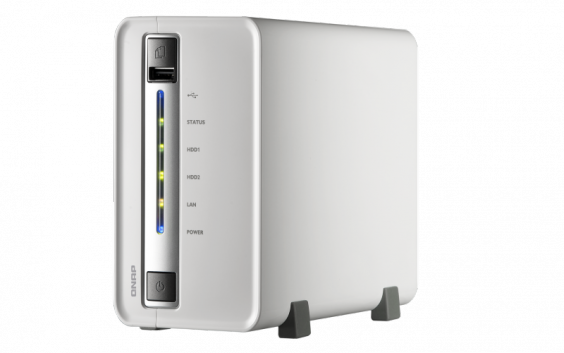
The DVR itself supports video recording of H.264, MPEG-4 and M-JPEG video from the connected cameras. All selected cameras support the H.264 codec. It should be noted that this codec allows you to significantly reduce the bitrate of video without losing the quality of the picture, but this requires serious computing resources. This codec contains many functions, including the adaptation of cyclic actions. For example, the swinging tree branch will not select the same bitrate as when using the M-JPEG codec.
Attentive readers will notice the similarity to the network drive of this company QNAP TS-212P. It should be noted that the filling of the models is similar, different and only the number of channels for connecting video cameras (8 from NVR versus 2 for NAS) and support for disks with a capacity of 10 TB each (against 4 TB each for NVRs ).
The interface of the settings is familiar and familiar to all who dealt with this technique.
A view of all cameras and recorded video is carried out through the firm software. In general, the model is simple and functional.
Camera comparison
And now I suggest comparing the picture from one camera only. It will be quite revealing. The first image is the work of an analog camera at night with a searchlight turned on. Original resolution.
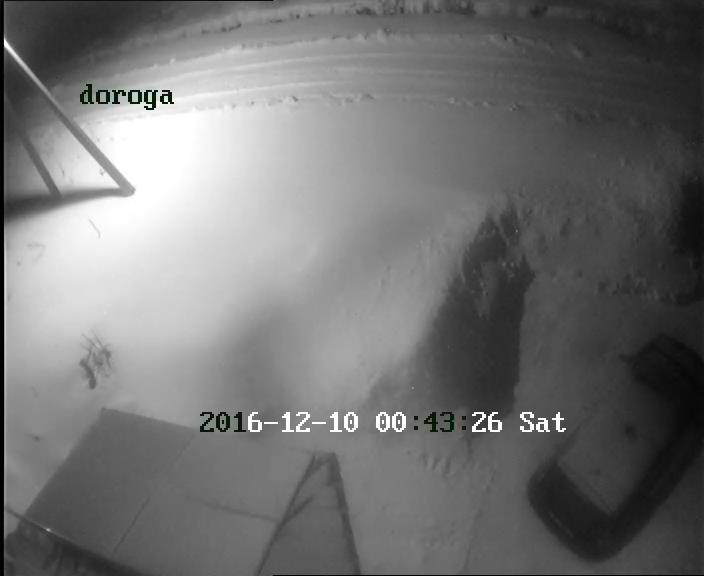
The second shot is the work of an analog camera at night with the searchlight turned off. Illumination IR illumination of the camera. The original resolution.
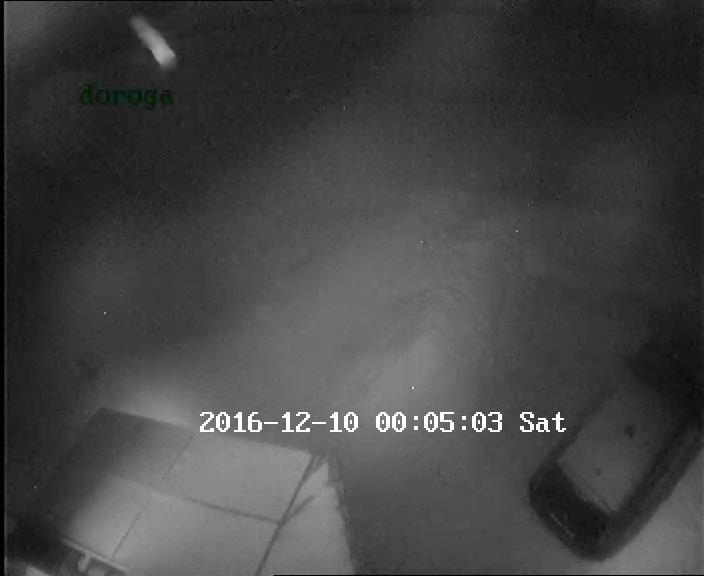
The third shot is the work of the IP camera at night with the searchlight turned off. Illumination IR illumination of the camera. In addition to the increased resolution (1920 * 1080 vs. 704 * 576), we see a much sharper picture, because the processing of the frame is carried out by the camera itself and the video surveillance server is already sent to the video surveillance server.
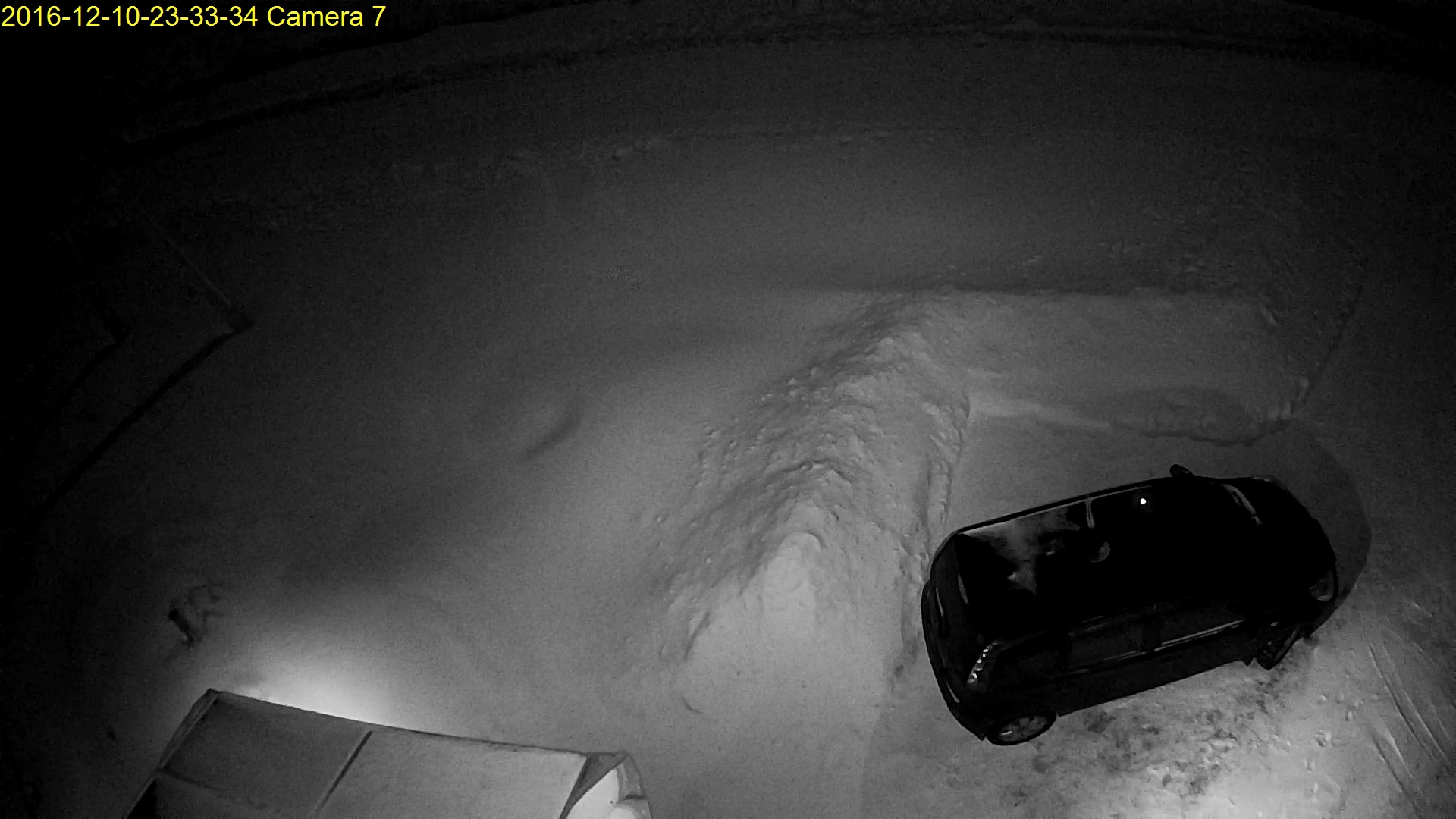
A finished picture without interference that may appear in the analog video signal on the way to the recorder. On the frame, even the illumination of other CCTV cameras can be seen.
Minute rest for the eyes
Just 5 minutes from the recording of the camera Ezviz C3S, installed next to the trough. 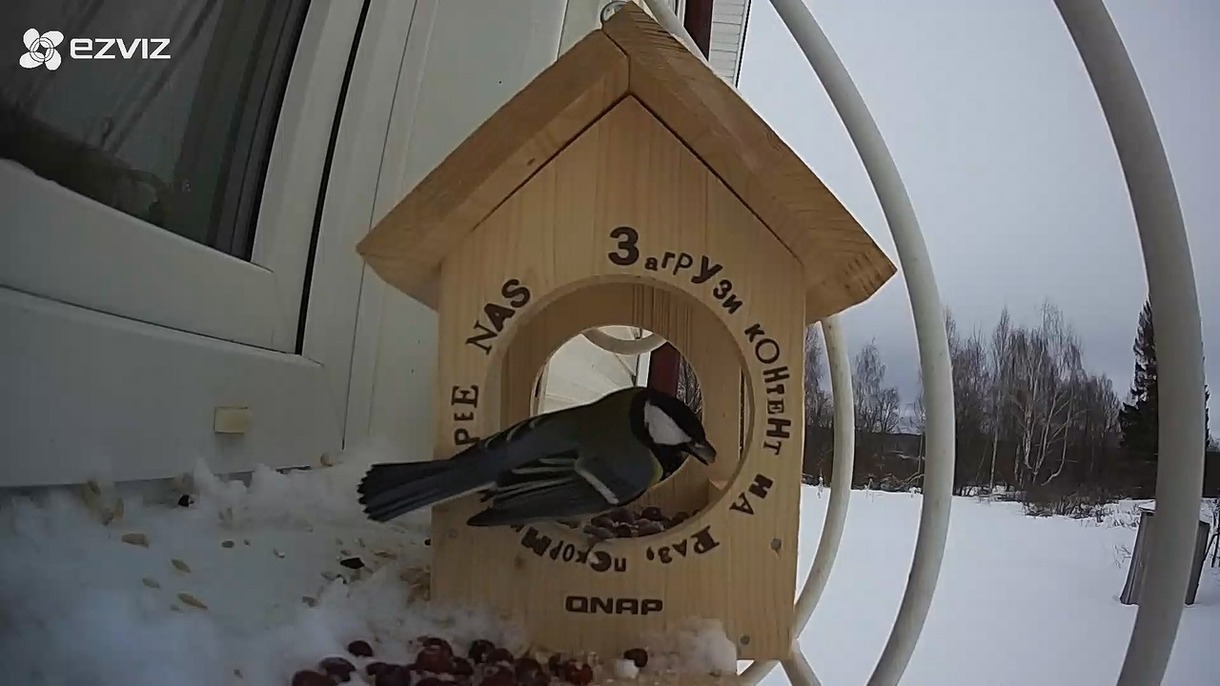
Conclusion
As it was said in the first part, the video surveillance system based on IP cameras is not much more expensive than the similar analogue kit. That’s only with digital technology, functionality can grow with the advent of new firmware, and the analog system almost always changes entirely, if new functionality is required (sometimes the question is solved by replacing the heart of the system with a DVR). Using the example of this project, it became clear that the creation of a video surveillance system is a fairly simple procedure if to act according to the plan: to put the task, to make a diagram, to determine the required parameters, to pick up equipment, to mount and adjust.
And remember: video surveillance is not the protection of your home. This is just one of the elements that will help prevent hacking or find unexpected guests. Try to position the camera so that you can see the faces of incoming. In addition, the video surveillance server should be well hidden or all records should be duplicated to remote storage. And let your house always remain your fortress!








